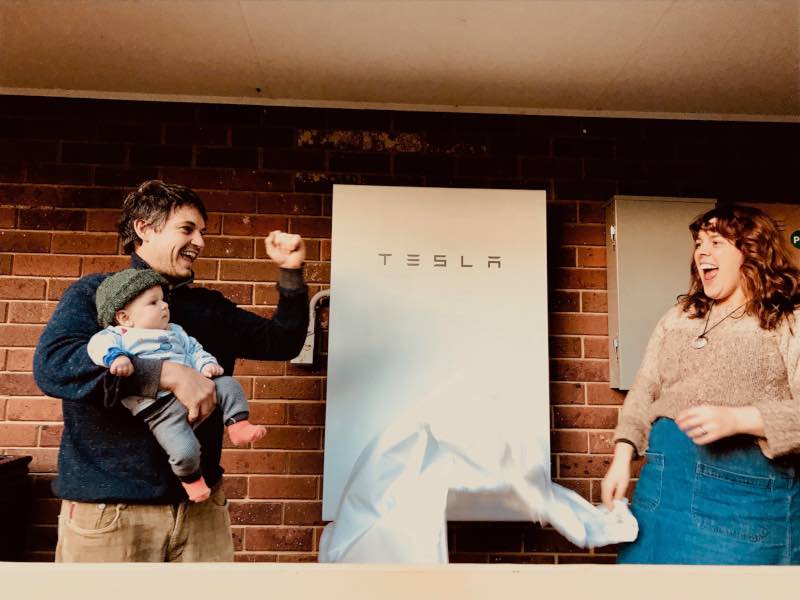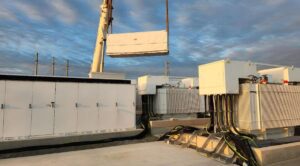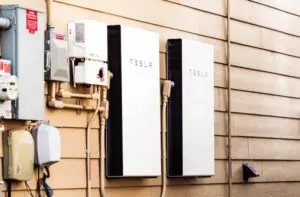It’s been a big couple of weeks for the Cheaper Home Batteries rebate, with announcements from Western Australia last week and New South Wales this week on how the game-changing federal subsidy will work alongside existing state schemes.
Industry expectations had been high – perhaps unrealistically so – that consumers might be able to stack the federal and state rebates, making the up-front cost of investing in solar storage very, very low and the decision to bite the bullet a complete and utter no-brainer.
In the case of the NSW Peak Demand Reduction Scheme (PDRS), for instance, the state rebate savings added to the federal offer of a roughly 30% up-front discount might have shaved close to $8,000 off the price of a Tesla Powerwall.
But with just weeks to go until the federal rebate kicks in, double discounts have been ruled out.
Rather, NSW has opted to dump the up-front rebate part of its scheme, entirely, replacing it with the more generous federal battery discount. The PDRS will be whittled back to the second part of the NSW scheme, which offers a newly boosted cash-back discount to solar battery owners who sign up up to a virtual power plant (VPP).
In Western Australia, where the existing home battery rebate makes it compulsory to sign up to a VPP, the size of the rebate on offer remains unchanged under a merging of the state and federal schemes – between $5,000 to $7,500. In this case, the WA government is using the freed up state funds to extend access to the rebate to five times as many households than originally proposed.
The reaction from industry has been mixed. In NSW, a petition has launched calling on the Minns Labor government to reinstate the NSW rebate and “ensure stackability” with the federal scheme.
“Industry stakeholders have expressed that the sudden policy shift was implemented without adequate consultation, leading to operational and financial challenges for small businesses in the solar and battery installation sector,” the petition says.
“The abrupt announcement has resulted in project cancellations and financial losses for businesses that had planned installations based on the continuation of the NSW rebate.”
Some of the comments being added to the petition are much more blunt in their message.
“Like many we’re left in the lurch by this backflip,” one commenter says.
“The promise that schemes would be stackable was part of my reason for voting for a returned Albo government. Did not expect that Minns would take this as an opportunity to claw back some money and leave so many households and installers caught out. It’s outrageously bad politics.”
“With both Federal and NSW battery rebates, it is yes for a solar battery. Without both, combined, it is a no from me,” another comment says. In case the NSW Government have forgotten – there’s a cost of living crisis.”
And another: “Based on comments made by Labor prior to the election, we understood that the federal+state rebates were stackable, and so we proceeded with our battery purchase and paid a deposit. Now at the last minute we find out that the state rebate is being cancelled and we have to find the extra cash from somewhere, or otherwise if we cancel our order then we lose our deposit.”
Solar Citizens, too, has called on the NSW government to reinstate the state rebate, describing the changes to the scheme as “a betrayal” of federal assurances and a “bizarre” move by a state trying to quit coal.
“This is a slap in the face for NSW solar home owners who were promised up to $2,400 by the NSW government if they invested in a home battery, regardless of other rebates. And now, with no notice, that has been taken away,” Solar Citizens’ CEO Heidi Lee Douglas said on Wednesday.
“This bizarre decision puts the timely closure of the Eraring coal-fired power plant at risk,” Douglas adds. “A key justification for extending the life of the plant was the lack of energy storage. The Commonwealth stepped in by boosting battery rebates further and now the NSW Government is making that transition harder.”
But not everyone is surprised that rebate-stacking is off the table, with one industry insider suggesting to Renew Econonmy that it was wishful thinking to believe such big discounts would ever be offered in the first place.
And it could be argued that the Western Australia approach, to use the combined clout of the two schemes to make home battery rebates go much further, has plenty of merit.
Others say the bigger concern emerging from the federal-state home battery rebate mash-ups is the focus and funding being poured into virtual power plant incentivisation.
The federal rebate requires batteries discounted through the scheme to be VPP compatible, but stops short of making it compulsory, as it is in WA. VPP participation is not compulsory in NSW, either, but households that were expecting a bigger rebate from July 01 might feel unduly pressured to join one, to get the up to $1,500 now on offer through the remaining, beefed up part of the PDRS.
The hope for VPPs is that Australia’s millions of rooftop solar and battery systems will be able to be aggregated by various third parties – such as retailers – and controlled collectively to offer paid services to the grid.
Certainly, the Australian Energy Market Operator (AEMO) is counting on consumers to join VPPs – that part remains voluntary under the federal rebate rules – to help harness the huge rooftop solar resource that so far remains largely beyond of its control.
AEMO says the establishment of VPPs “coordinated at scale and in a predictable and reliable manner” could significantly reduce the scale of network and other investments needed to firm renewables and maintain reliable and secure electricity supply – making its job easier and, theoretically, cutting the cost of electricity for all.
“We know the best benefit for the grid comes when these batteries are linked together, and NSW wants to be world-leading in encouraging households and small businesses to be a part of that,” NSW energy minister Penny Sharpe said on Tuesday.
The question is, do VPPs deliver the best benefit to the households and businesses that have invested in solar batteries?
According to the recent data from SunWiz, consumers remain unconvinced, with most VPPs currently registered with the AEMO to provide grid services remaining small, while others have gone backwards or been wound up.
Marc Sheldon, the CEO of Australian battery outfit RedEarth Energy, says consumer trust remains a big barrier to VPP uptake
“It’s really difficult for a lot of customers to accept the fact that there is someone who will control this rather expensive asset that they just spend so much money on, and they [might] make a small amount of money out of it,” he tells the latest edition of the Solar Insiders Podcast this week.
“They then read in news articles that … the aggregator or VPP operator… made a significant amount of money because something happened, I don’t know, a power station exploded, or the grid disconnected in South Australia and … they find out these guys made 1,600 bucks, and I get 200?!
“It’s a bit… of a disconnect between the asset owner and the people that benefit from it, I think,” Sheldon says. “That particular thinking – ‘Do I hand over control of something that I paid for’ – is not going to change much.”
Sheldon – whose employment background includes stints at Sonnen and SwitchDin, both companies heavily involved in VPPs – also questions whether aggregated solar and battery assets are the best thing for the grid.
“The critical piece for me is also that the benefit that we, or the VPP operator, used to get out of it, specifically focused on FCAS as a significant revenue source, has also fallen by the wayside,” he says.
“We now see that that market has, I wouldn’t say collapsed, but significantly decreased in overall size, not least because there’s so many big batteries who are now coming in and just basically taking it and reducing the volatility in the in the FCAS market and contingency market.
“And then you look at origin and AGL, who run some of the largest VPPs in Australia – they use the VPPs as a counterparty to their generation assets.
“So they use it within their act of trading and you can see how that works, how their VPPs actually kick off at times where you wouldn’t really expect it,” Sheldon says.
“So that makes sense for a gentailer, but is it good for the grid? I don’t know. I think it’s good for them, and the money they make is not money that they give [the consumer]. So no, I’m not a fan of VPPs.”








